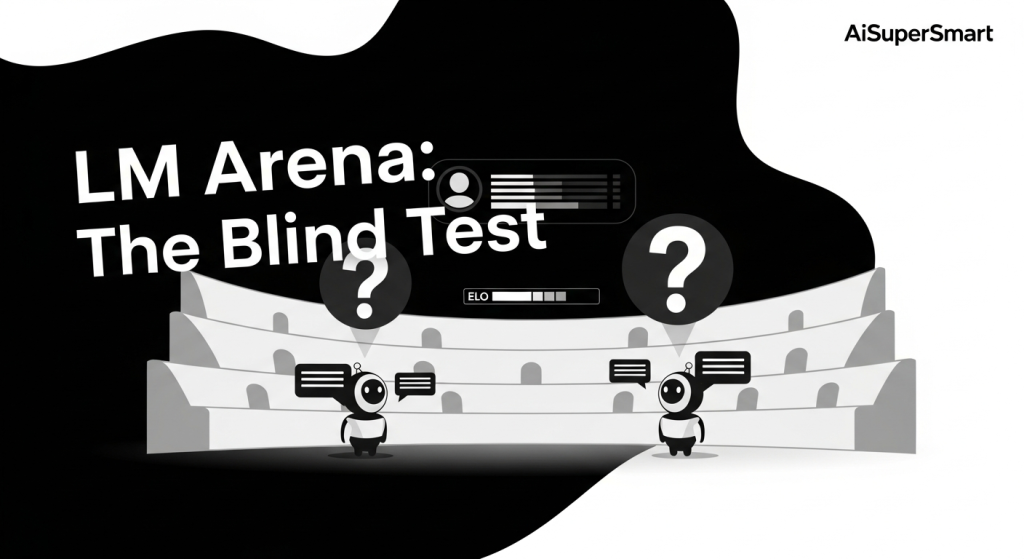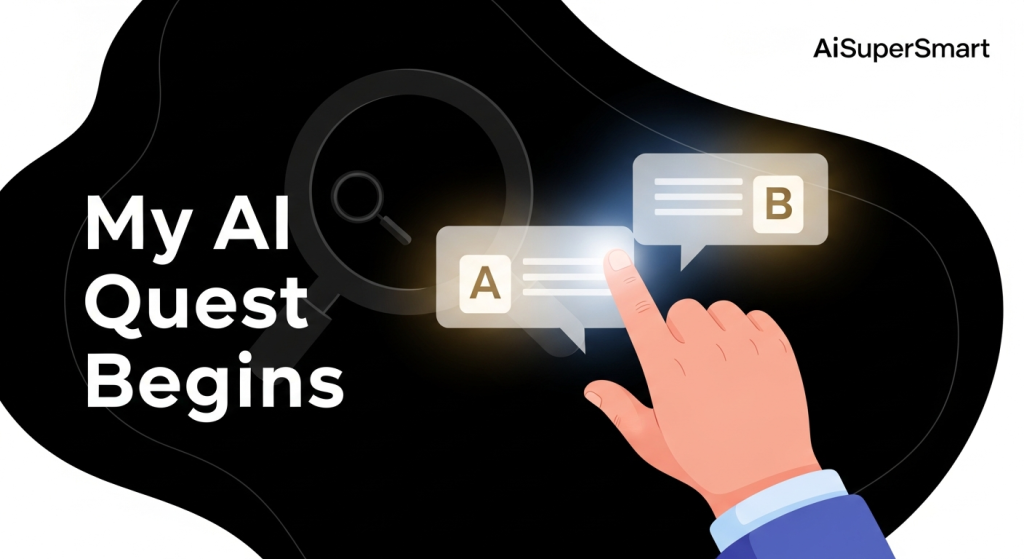Let’s face it, keeping up with the dizzying pace of AI development feels like a full-time job. Every week there’s a new “best” model, a “breakthrough” in understanding, or a “game-changing” feature. How do you, a regular human trying to get things done, make sense of it all and figure out which AI actually performs best for your needs? I felt that frustration, especially when trying to understand how newer models, like Google’s latest, stack up against established giants like GPT-4.
This is where LM Arena, or LMSYS Chatbot Arena, stepped in for me. It’s a genuinely brilliant platform that lets you pit two anonymous large language models against each other in a blind test, and then you get to pick the winner. It’s like a scientific experiment you can run right from your browser.
[START BOX]
Key Takeaways from My LM Arena Experience
- Best for Raw Comparison: LM Arena is unparalleled for blind, side-by-side performance testing of various AI models, including popular and cutting-edge ones.
- Insight into Google’s AI: It offered a surprisingly nuanced view of how Google’s models perform under pressure against competitors.
- My Key Tip: Always try multiple prompts and scenarios. A single test won’t reveal the full picture of any AI’s capabilities.
[END BOX]
Table of Contents
ToggleFirst, What Exactly Is LM Arena?
Think of LM Arena as the coliseum for AI models. Developed by LMSYS (Large Model Systems Organization), it’s a crowdsourced platform where users interact with two randomly chosen, anonymous large language models (LLMs) side-by-side for the same prompt. You don’t know which models you’re talking to until you’ve made your judgment. Your job is simple: give them a prompt, compare their responses, and declare a winner (or a tie).

Related Posts
This process generates a massive dataset of human preferences, which LMSYS then uses to calculate an “Elo rating” for each model. It’s similar to how chess players are ranked, reflecting a model’s performance relative to others. This continuous, real-world testing provides a dynamic, user-driven leaderboard of AI capabilities. It’s not just about theoretical benchmarks; it’s about what people actually prefer. You can check out the official project on their GitHub page.
My Mission: Pit Anonymous AIs, Find Google
My goal was straightforward: jump into the arena and see how various models performed, specifically keeping an eye out for how models like Google’s Gemini or PaLM 2 might fare when stripped of their branding. I wanted to experience the comparison process firsthand and share my journey.

Step 1: Entering the Arena (And Choosing My Battle)
Navigating to the LM Arena website is easy. You’re immediately presented with an interface that’s clean and functional. No fancy animations, just pure comparison.
The core action is the “Battle” section. Here, you get two chat boxes, labeled “Model A” and “Model B.” Crucially, you have no idea which models they are. This blind setup is what makes LM Arena so effective at reducing bias.
For my first few rounds, I decided to focus on creative writing prompts, as this often highlights subtle differences in an LLM’s understanding, style, and ability to generate coherent, engaging text.
Step 2: Crafting Prompts and Observing Responses
This is where the real fun begins. I started with a relatively simple prompt to warm up:
My Prompt: “Write a short, engaging story (around 300 words) about a squirrel who discovers a magical acorn that grants wishes, but with unexpected consequences.”
I hit enter and watched as both Model A and Model B began generating their stories. This is where patience comes in; sometimes one model is faster than the other.

What I immediately noticed was the tone. Model A started with a whimsical, almost fairy-tale-like opening, while Model B took a slightly more direct, less imaginative approach. As I read through both, I looked for:
- Creativity: How original were the wishes and consequences?
- Cohesion: Did the story flow well? Were there any abrupt shifts?
- Word Choice: Was the language engaging and varied?
- Adherence to Constraints: Did they stick to the word count?
In this first round, Model A clearly won. Its story was more imaginative, its consequences more cleverly woven into the narrative, and its overall prose more enjoyable to read.
Step 3: Digging Deeper with More Complex Scenarios
After a few more creative prompts, I shifted gears to something more practical and challenging:
My Prompt: “Explain the concept of quantum entanglement to a high school student using a simple analogy. Then, discuss three potential future applications of quantum computing that are currently being researched.”
This prompt tests not only explanation skills but also the ability to retrieve and synthesize specific factual information.

In this round, the differences were more pronounced. Model A used the classic “entangled coins” analogy effectively and then provided well-structured points on drug discovery, materials science, and cryptography for quantum computing applications. Model B’s analogy was a bit more convoluted, and its application examples were a little less detailed. The clarity of the explanation really became the deciding factor here.
Step 4: My “Google” Moment – Unmasking the Models
After each battle, you get to choose “Model A is better,” “Model B is better,” “Tie,” or “Both are bad.” Once you’ve made your selection, the “reveal” button appears.
This is the moment of truth! After several rounds, I started seeing patterns. Sometimes, one model consistently produced more coherent or creative responses. I was particularly interested in identifying when I might have been interacting with Google’s latest models.
In one specific instance, after a complex coding challenge where one model generated much cleaner and more efficient Python code, I revealed the names. Model A, which produced the superior code, was identified as “gemini-pro,” while Model B was “llama-2-70b-chat.” This was a fascinating result, as it showed that in specific technical tasks, Google’s model could indeed outperform another highly respected open-source model in a blind test. It affirmed that branding doesn’t always tell the full story; performance does.
So, What Were the Final Results and My Takeaways?
My time in the LM Arena was incredibly insightful. It’s easy to get caught up in the hype cycles, but actually using these models side-by-side, without knowing their identity, provides an unbiased perspective.
- Google’s AI is a Strong Contender: While not every battle saw a Google model as the winner, my experience consistently showed that models like Gemini Pro are extremely capable, often holding their own or even surpassing other top-tier models, especially in specific areas like coding or structured information retrieval. They’re definitely in the top echelon.
- Context Matters: No single AI is “best” at everything. I found that models excelled in different areas. Some were more creative, others more factual, some better at succinct summaries, and others at detailed explanations.
- The Elo Rating is Powerful: Over time, the collective judgments of thousands of users form a very reliable ranking. It gives you a real-time, dynamic view of where models stand, much more so than static benchmarks.
My Final Verdict on LM Arena
If you’re serious about understanding the real-world performance of large language models, or if you’re just curious about how different AIs stack up without the influence of marketing, LM Arena is an indispensable tool. It strips away the branding and lets the models speak for themselves. I highly recommend spending some time there to develop your own intuition about AI capabilities. It’s a fantastic way to personally experience the evolution of AI.
What tools have you tried for comparing AI models? Share your results and experiences in the comments below!




